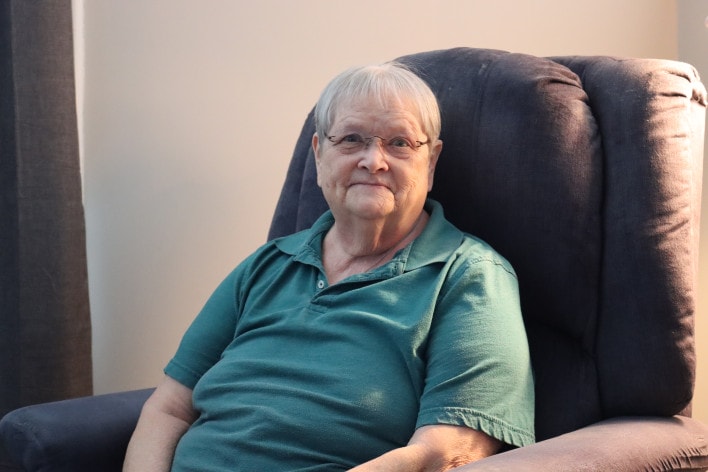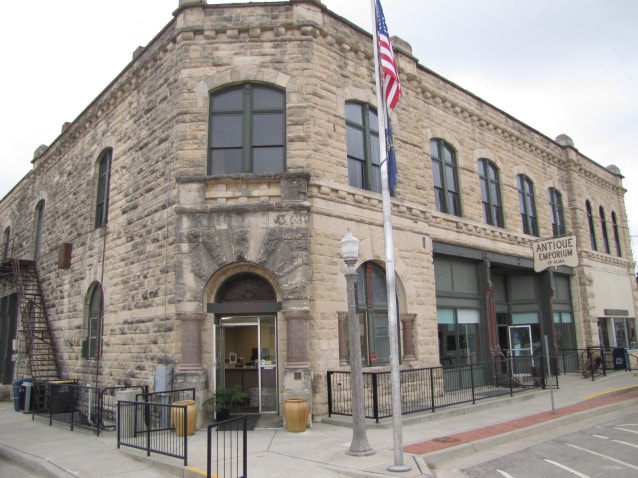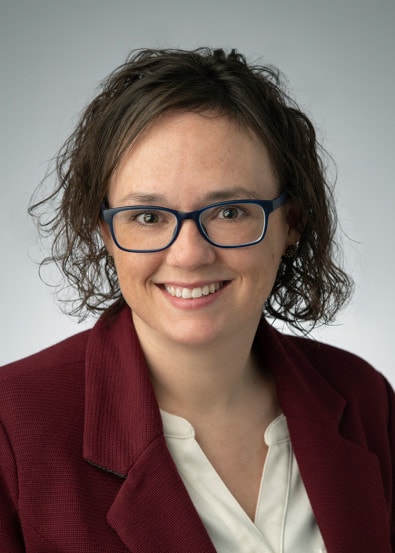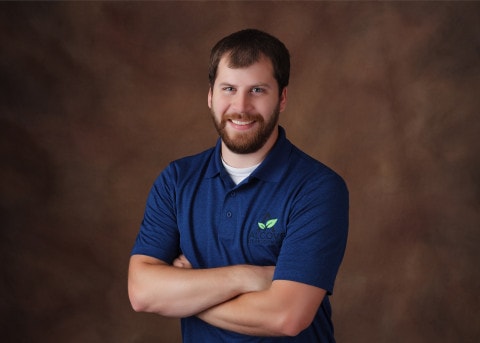Kansas Encourages Rural Housing With Massive Influx of Funds Projects Help House Rural Kansans Who Might Otherwise Fall Through the Cracks
Published February 2nd, 2023 at 6:00 AM
Above image credit: The Atchison YMCA served the community from its construction in 1913 until 2017. It started a new life as an apartment building in 2020. (Cami Koons | Flatland)Linda Underwood was faced with finding a new, affordable home in Atchison, Kansas, on a fixed retirement income.
Her quandary coincided with the opening of the 1913 Apartments, a 17-unit apartment in Atchison’s historic, downtown YMCA.
The $3.2 million project leveraged state and federal historic preservation tax credits and funding from the Kansas Housing Resource Corp.’s (KHRC) Moderate-Income Housing (MIH) program.
Underwood snagged the last unit in the building and has lived there for the past few years. She pays about $800 a month for the one-bed, one-bath unit and is within walking distance of most of her needs.
“I really don’t want to move again,” Underwood said.
MIH started in 2012 as a state-funded program to help house families who did not qualify for low-income housing support, but whose incomes are not high enough to afford market-rate housing.
For its first few years, MIH was a well-intended program operating with modest resources.
Then everything changed.
In 2022 KHRC received a massive influx of financial support from the state budget, the American Rescue Plan Act and a revolving loan fund. As a result, MIH funding, which had been capped at $2 million a year, now has $62 million to allocate for middle-income housing in rural counties.
The funding came in response to the corporation’s 2021 Statewide Housing Needs Assessment. The data collection showed a lack of affordable housing in the state that predated the pandemic.

Funding the Gaps
KHRC is the state manager for housing funds. It oversees low-income housing, some U.S. Housing and Urban Development (HUD) resources, the Kansas Emergency Rental Assistance funds during the pandemic, income housing tax credit programs, the MIH program and Kansas housing investor tax credits.
Low-income housing, which is designated for folks whose household income is at 60% or less of the area median income, has federal funding support. MIH is funded by the state and designed to serve folks between 60% and 150% of the area median income in Kansas counties with fewer than 60,000 people.
MIH funded projects vary in scale and nature.
Some communities benefit most from building affordable rental units, such as Atchison. Others need new single-family homes. And others request funds for senior housing.
“With the moderate-income housing program, we try to recognize that each community … may have different assets in their own community,” said Alissa Ice, director of housing development at KHRC.
Counties or cities apply to KHRC for MIH project funding and typically work with a developer on the projects.
“The developer will build the housing and manage the housing, but we will work with the city or counties ultimately … and (that’s) who we distribute the funds to,” Ice said.
KHRC has a five-year agreement with partnering cities and counties. During this time, a percentage of the units must remain affordably priced.
The 1913 Apartments in Atchison opened in the summer of 2020.
Developer Justin Pregont said 16 of the 17 units in the building are leased to folks who fall in the moderate-income range and are priced accordingly.
The $3.2 million project with units priced between $800 and $1,300 a month hardly qualifies as a cash cow.
“At some point, I owe my investment back a lot of money, and that has to come from somewhere,” Pregont said.
That doesn’t mean he is going to raise the rent and tell folks like Underwood to get out. He plans to keep rates low for his current residents who wish to stay, but after the five-year contract with KHRC, units that become available will be listed at a market rate.
“This is a community service project of sorts,” Pregont explained.

Pregont grew up in Atchison and used to work in its local government.
He kept hearing whispers that the old, brick YMCA on Commercial Street should be torn down to make way for a parking lot. The historic building was no longer in use as a new YMCA opened in 2017.
“That made my head want to explode,” Pregont said.
He started looking for ways to save the building and turn it into something useful again. His knowledge of local government led him to the MIH program, which provided $400,000, and he combined it with state and federal historic tax credits to make the 1913 Apartments a reality.
Now, Pregont’s full-time gig is with his development company, Pomeroy Developments.
“Kansas probably doesn’t get enough credit for their commitment to rural housing, but I wouldn’t have had the confidence to make the leap from a W-2 job to try to do this full time, but for all the resources that KHRC, and the state of Kansas, put into middle income housing,” Pregont said.
His goal is to create affordable, quality housing in rural areas, while reviving pieces of Kansas history.
“There’s a difference between that,” Pregont said as he pointed to a historic photo of the 1913 Apartments building on the wall, “and 1,200-square-foot, slab-on-grade, vinyl-sided houses out on the edge of town.”
Pregont said it is essential to combine MIH funding with other available programs to make such projects a reality.
“Nobody in small towns in rural Kansas is building to this income group without assistance,” Pregont said.
Ice with KHRC said most MIH projects combine grants and tax credits to become a reality.
One project in Alma, Kansas, used MIH and historic preservation funding to renovate the old limestone Limerick Building — previously a bank, drug store and brokerage house — into affordable apartment units.
Another project in Allen County embraced the idea of building equity into a home and embarked on a project that would build two-story homes with an unfinished second story.

“Whoever moves in there can remodel, update the upstairs to meet their family’s needs, but also build equity and value into their home,” Ice said.
Another project in Dodge City, Kansas, partnered with the local high school to build a house each year. Yet another built moderate-income duplexes for seniors in rural towns.
MIH funding doesn’t cover all the costs of a project because grants are capped at $650,000. But it makes it possible for a developer to come in and build in a smaller area they might not have otherwise considered.
“The MIH program can come in and … make it so that (a) developer is willing to come in and do that unit,” Ice said. “They’re not making a huge profit, but it’s also just bridging that gap so that they’ll come in, and it’ll be worth it for them to do the project.”
Building the Local Stock
Following Kansas Gov. Laura Kelly’s announcement of an increased commitment to MIH funding for rural Kansas, KHRC received 48 applications to the program. According to a press release, it was a 74% increase from 2021 project applicants.
In December, KHRC awarded almost $5 million, total, to 11 different housing projects across the state, and $7.9 million in newly established Kansas Housing Investor tax credit dollars.
Kansas House Bill 2237 created the tax credit and allocated $13 million per year in tax credits to bring housing investments to Kansas counties of fewer than 75,000 people.
Ice said the tax credit allows KHRC to credit developers up to $35,000 per unit in projects with up to 40 units per project.

“What we see is that credit can fund approximately 15% of the development budget,” Ice said. “It’s really helping to close that gap to make it so that people are willing to invest in the development of housing in these communities that just don’t have it right now.”
One of the winning projects from the end of 2022 will break ground soon in Carbondale, Kansas, a community of a little over 1,300 people, just south of Topeka.
John Ryan, the city’s mayor, said most folks are farmers or people who commute to Topeka for work. Right now, there aren’t a whole lot of homes on the market, but Ryan is excited for that to change.
“What we want to do is to encourage people to live here,” Ryan said. “We think we’re in an ideal position being close to Topeka … to provide them with a good wholesome home and a nice town to raise their children in.”
The city’s motto of “small town comforts, big city connections” is exactly what drew Jeremiah Johnson, a partner at Alcove Development, to work with the city on the development of 20 single-family homes.
When Johnson first looked at the development site, he wasn’t expecting to do anything with it. The town was small, and the average home sale was less than $200,000.
“To compete, you can’t build a new house for anywhere close to that anymore,” Johnson said.
But he liked the town and its proximity to employers such as Mars Wrigley and the Target distribution center at the south end of Topeka.
“So, we started looking into what kind of programs were out there,” Johnson said. “This (MIH) is one that we found that would help us get to where we needed to be, to bring an attainable product that was still good quality.”
Johnson will use MIH, a Rural Housing Incentive District (RHID) and the Kansas Housing Investor tax credit to build 20 new, affordable houses in Carbondale. Johnson plans to apply in another round of MIH funding for an additional 20 houses.
Normally, three-bedroom, two-bathroom houses of this size and quality would sell for around $325,000 to $350,000. But with the grant money and tax breaks, the Carbondale properties will list for about $225,000. Johnson said half of the houses will be sold to folks within the median-income range.
“It cost the exact same to build a house in Carbondale and the same house in Kansas City,” Johnson said. “The only difference is the land cost, so programs like these are important to try to get down to where the community can support what we’re doing.”

In general, developers in bigger cities don’t look to small towns like Carbondale for projects. That’s why these funding programs are only eligible in counties with fewer than 60,000 people.
Johnson encourages rural towns in Kansas to use the availability of this funding to attract developers.
“I don’t know how many big developers are looking at small communities, but it definitely could be a selling point of these communities to market themselves to people,” Johnson said.
Pregont couldn’t agree more. Developers don’t want to build in rural areas because the appraisal values are low, but the appraisals are low because no one builds new homes.
“This would not be the thing that I chose to do if I was profit maximizing,” Pregont laughed. “The problem is that there is no supply. The only way … to chase rents down is to introduce new supply.”
Despite widespread belief, Pregont has found that rural folks are eager for quality housing.
“They want to live somewhere nice, not somewhere that’s got Formica countertops that was built in 1980,” Pregont said. “Those people have always materialized for us, and they tend to be teachers, nurses, downsizing retirees, social workers (etc.).”
In other words, even after the five-year MIH contracts, these units and houses will serve rural Kansans.
KHRC’s $62 million in resources will be dished out every four months throughout the year. Applications from the first round are due Feb. 17, with another application round in July.
“Our hope is that if an applicant isn’t funded, that they’ll come in again, so they will eventually be funded,” Ice said. “By doing this, we’re hoping that communities can really figure out their needs and figure out their capacities.”
Cami Koons covers rural affairs for Kansas City PBS in cooperation with Report for America. The work of our Report for America corps members is made possible, in part, through the generous support of the Ewing Marion Kauffman Foundation.


